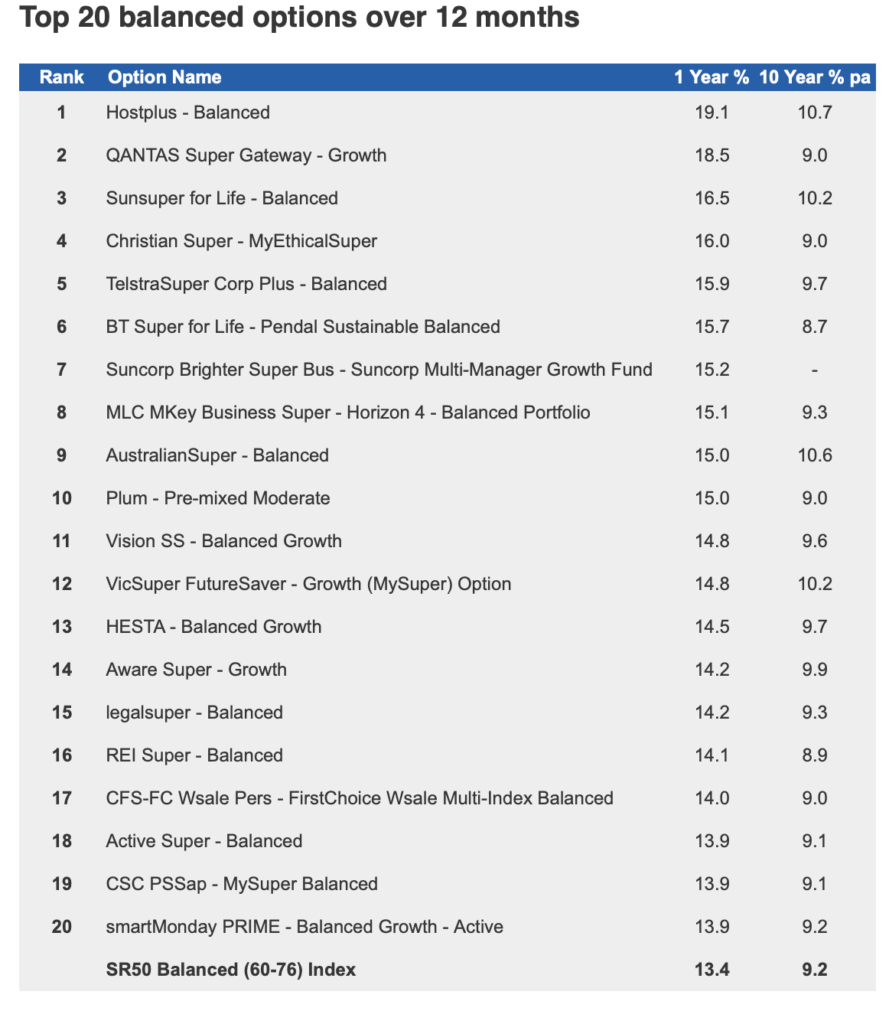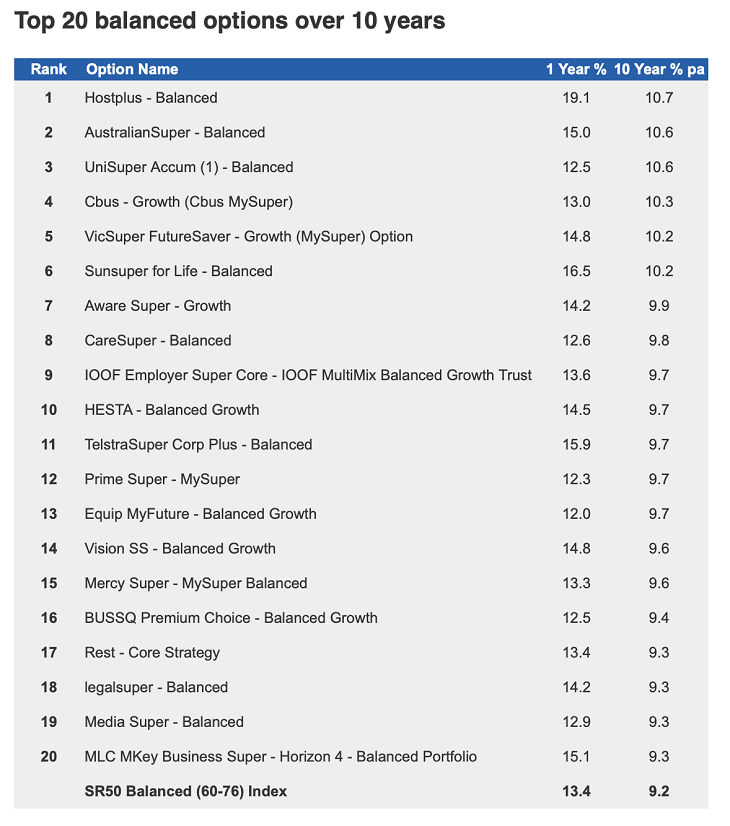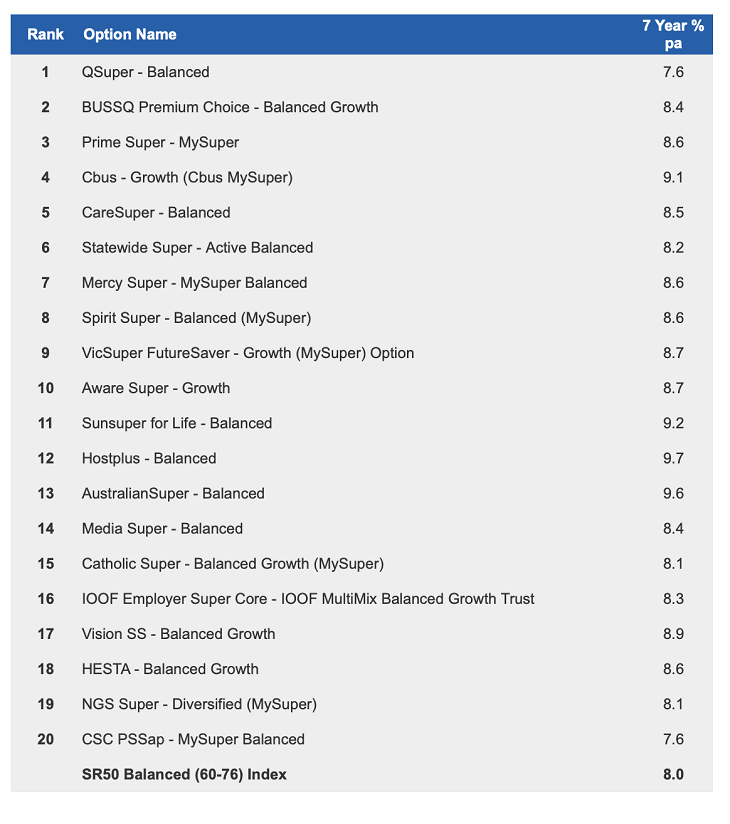Super funds delivered a $400 billion windfall for members in 2021, with the median balanced option returning 13.4 per cent, but members are being warned to downgrade their expectations for this year.
There were positive returns in 11 out of 12 months in 2021 and since 2000, there have been only three negative calendar years: -4.8 per cent in 2002, -19.7 per cent in 2008 and -1.9 per cent in 2011.
SuperRatings reports that the annualised return since 2000 sits at around 6.6 per cent per annum and is slightly ahead of fund objectives of inflation plus 3 per cent over rolling 10-year periods.
The top 20 performing balanced options all returned 13.9 per cent in 2021, with Hostplus Balanced the top performer with 19.1 per cent.


Hostplus Balanced was also the top performer over the long term, with an average annual return of 10.7 per cent over the past decade.

SuperRatings has also analysed what it calls ‘the bumpiness factor’.
Read: Shock number of super funds failing to meet APRA benchmarks
It says that due to the uncertain financial conditions around the world, fund members need to consider the level of ‘bumpiness’ – or ups and downs –they’re comfortable with.
The table below shows the top 20 funds ranked according to their volatility-adjusted return, which measures how much members are being rewarded for taking on the ups and downs.

Given the challenging conditions being faced due to the pandemic, the growth and returns of sustainable funds is also being hailed as impressive.
The top sustainable asset allocation, UniSuper’s global environmental fund, returned 25.4 per cent in 2021 to November.
Read: Super changes could cost you $300k
SuperRatings executive director Kirby Rappell says the performance of sustainable options tends to sit below standard balanced options, but that in recent years sustainable balanced options are performing competitively with standard balanced options.”
The Responsible Investment Association of Australasia notes that there has been a “dramatic” capital shift towards sustainable investments, fuelled by member demand.
Despite the positive results, research house Chant West warns that there are risks on the horizon and that members should expect more “normal” returns in 2022.
Read: How to make your super grow as fast as possible
Chant West senior investment research manager Mano Mohankumar labelled the 2021 results “remarkable” but said returns would be markedly lower over the longer term.
“Super funds have had a tremendous year with a median return of 13.4 per cent but returns at that level shouldn’t be thought of as normal,” he told The Australian. “The typical long-term return objective for growth funds is to beat inflation by 3.5 per cent per annum, which translates to about 5.5 per cent to 6 per cent per annum.
“We now have data going back 29-and-a-half years to July 1992, the start of compulsory super. Over that period, the annualised return is 8.2 per cent and the annual CPI (consumer price index) increase is 2.4 per cent, giving a real return of 5.8 per cent per annum – well above that 3.5 per cent target.”
SuperRatings’ Mr Rappell says that with stapling changes taking effect late last year, meaning your fund will now follow you when you change employers, now is a good time to do a health check on your fund.
Were you a winner with your super fund in 2021? Or have you decided to switch funds? Are you confident you have your funds in the best investment level for 2022? Why not share your views in the comments section below?
If you enjoy our content, don’t keep it to yourself. Share our free eNews with your friends and encourage them to sign up.

